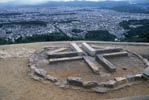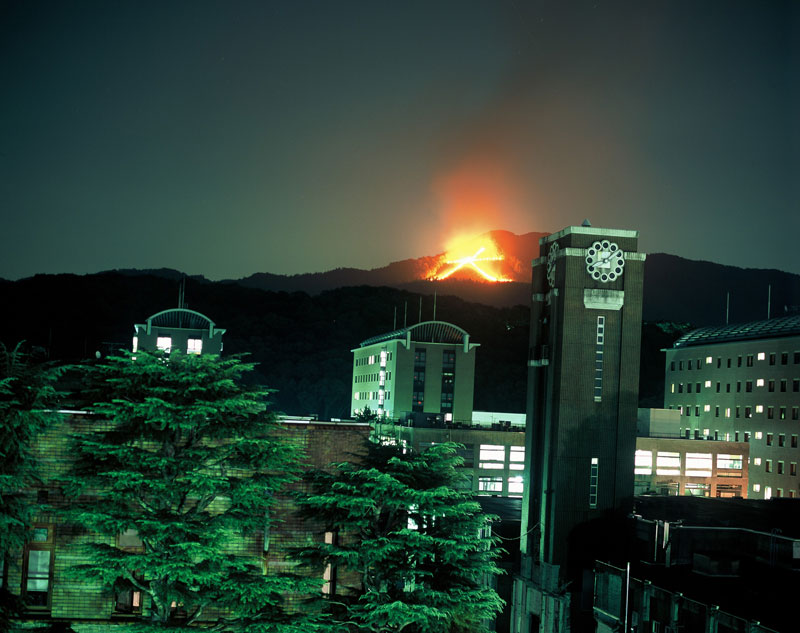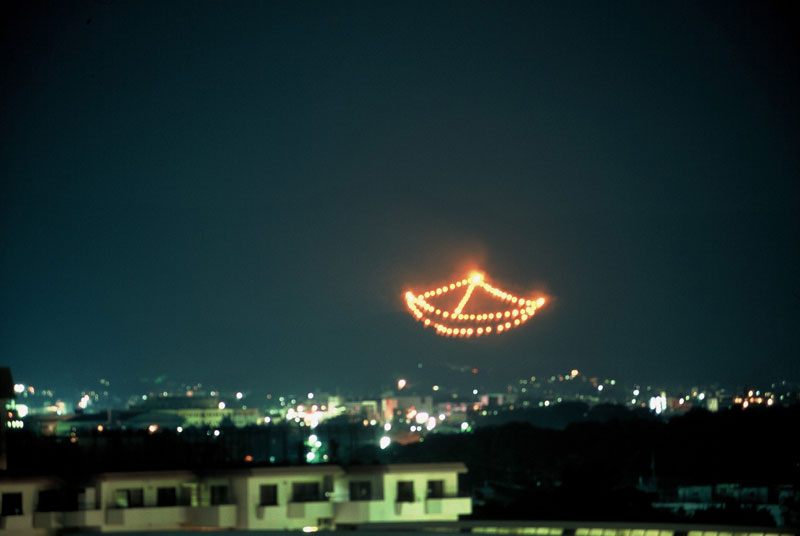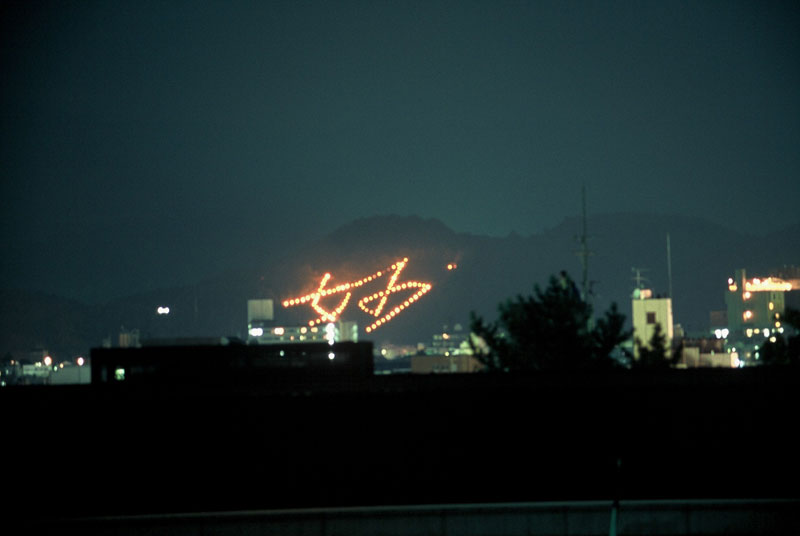Kyoto University has witnessed the annual Daimonji bonfire for over a century
Each year, at 8:00 p.m. on August 16, five fires in the shapes of enormous Chinese characters and other forms are lit on the five mountains surrounding the city of Kyoto. Called Gozan Okuribi and associated with the Buddhist festival of the dead known as Obon, these fires are intended to see off the spirits of departed ancestors as they return to the other world. Although there are contradicting theories regarding its origin, it is often said that the custom began during the Muromachi period (1336-1573). The traditions regarding each character and form are passed on from generation to generation among longtime residents of the local community. Today, members and volunteers of the Daimonji Preservation Committee are responsible for the fires. Associate Prof. Shuichi Miyazaki, from the Academic Center for Computing and Media Studies, is one of the volunteers on the committee. In the harsh winter winds that blow in February, he has cut pine trees, split logs, and prepared the prayer sticks of wood known as "gomagi " (on which one writes prayers in memory of ancestors, for the long healthy life of those living, or for other causes) for the Buddhist rite.
From Kyoto University you can view all five mountains once the bonfires are lit, with the magnificent 大 , dai (large) character being the closest and most visible. At 8:00 in the evening, several hundred people gather on the roofs of school buildings to watch as the dai character lights up against the jet black surface of the mountain. Next, the characters 妙 myo and 法 , ho (excellent law of the Buddha) are formed, followed by funagata (a design shaped like a ship) and hidari dai (the left 大 ). Finally comes the lighting of the torii (a design shaped like a shrine archway). Both flame lighters and rooftop gatherers alike send their thoughts to their ancestors, as they watch the fires burning bright with awe and reverence.
 |
Fire grates for the Daimonji bonfires and a panoramaic view of the city of Kyoto. On the day of the bonfires, wood is stacked on these and lit. "Until the fire is lit well, it does not have the power to send off the spirits of the ancestors." says Daimonji Preservation Committee Deputy Director Shuji Hasegawa. |




